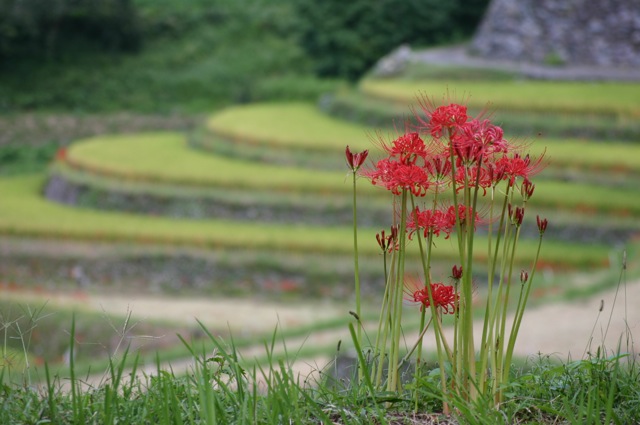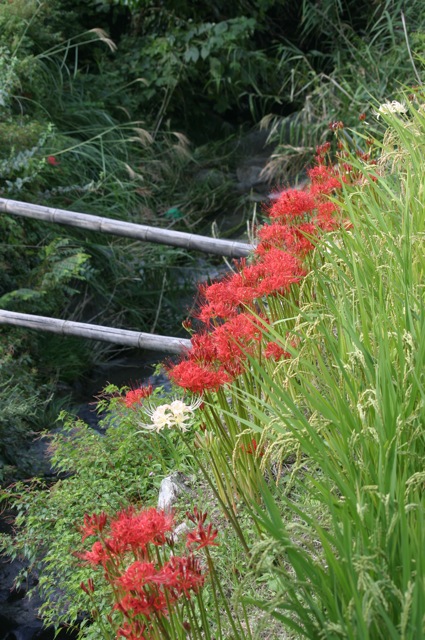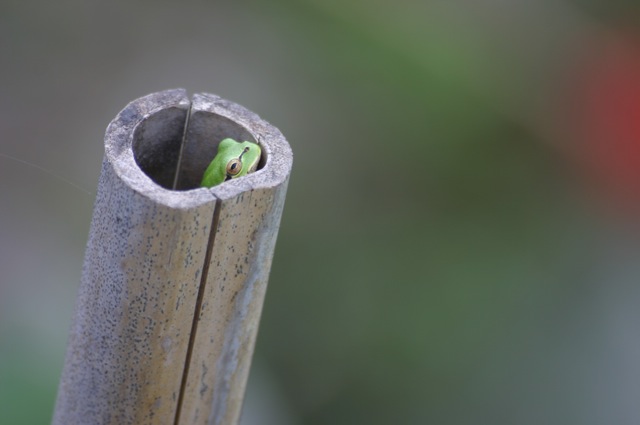Of Rice and Men
 Wednesday, December 14, 2011 at 4:55PM
Wednesday, December 14, 2011 at 4:55PM
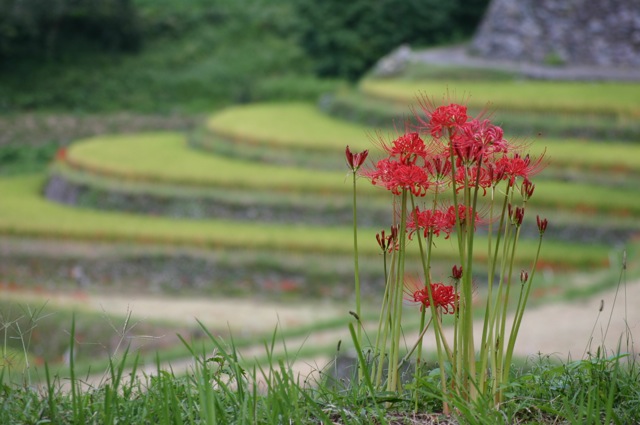 A few months ago, I visited Ukiha Machi in the southern part of Fukuoka Prefecture to see the terraced rice paddies—known as tanada, (棚田) or dandan batake (段々畑)—and the cluster amaryllis (higan bana 彼岸花).
A few months ago, I visited Ukiha Machi in the southern part of Fukuoka Prefecture to see the terraced rice paddies—known as tanada, (棚田) or dandan batake (段々畑)—and the cluster amaryllis (higan bana 彼岸花).
While there I was struck once again by the size of the rice fields: some were as small as a twin-sized mattress, many no larger than a lane in your local public swimming pool. Some were so small I couldn’t help wondering how much rice even the most determined farmer could grow on such a limited space.
And so, curiosity had me going around pestering people to find out just how much rice could be harvested from a field that measured only 1 tsubo.[1] Would there be enough rice for, say, an o-nigiri (rice ball)?
(I asked some of my college students this same question and got answers that varied from 50 rice balls to 500.)
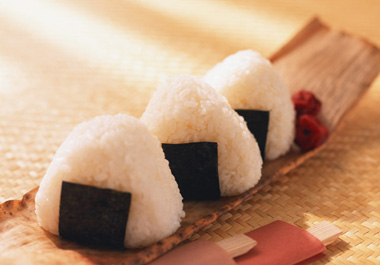 Well, I eventually got around to asking a relative of mine, who like many rural Japanese is a weekend farmer, and was kindly provided with the answer.
Well, I eventually got around to asking a relative of mine, who like many rural Japanese is a weekend farmer, and was kindly provided with the answer.
Rice fields in Japan are measured in tan, which are equivalent to 992m2. Tan atari (反当たり), or tantō (反当), then refers to how much can be harvested from a field. A typical rice field will produce a tan atari of 8 to 9 tawara[2], or 480 to 540 kilograms of rice. Since 1 tan is equal to 300 tsubo, one tsubo would provide 1.6-1.8 kilos of rice. Mind you, this is would be genmai, or unpolished, brown rice. Once polished you would end up with about one shō (一升) of rice, or 1.5 kilograms. Thus, with a-one tsubo rice-paddy you could expect to harvest about one shō of uncooked rice.
1 gō[3], or about 150 grams, of uncooked rice is enough rice to make about two o-nigiri once cooked.
So, that single tsubo patch of planted rice would yield about 20 rice balls. A paddy the size of one tatami mat would give you enough rice for ten rice balls.
[1] The tsubo (坪) is a standard unit of area still used today in Japan to measure land and floor space. One tsubo is equal in size to two tatami mats side by side or 3.31m2 (1.82m x 1.82m).
[2] A tawara (俵) is a straw bag for holding rice. Similar to bushels in the U.S., the tawara is sometimes used to measure capacity.
[3] A gō (合) is another unit used in measuring volume. One gô of uncooked rice contains about 6700 grains of rice.

